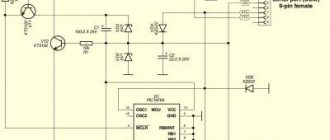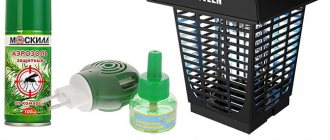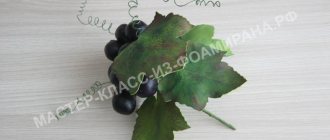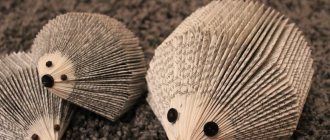Physical experiments for primary school children
The laws of science, ordinary entry-level physics can be found and discovered in the simplest objects and their amazing properties. “Go through fire, water and copper pipes” - a well-known phraseology is used, on occasion, for test-discoverers.
Balloon, fire and water
Flying balls bring holidays and joy to children. Why do the ball and smoke rise up? When we inflate ourselves or with the help of fire, the heated air becomes rarefied, lighter than cold air, and the balloon flies up. The material of balloons is fragile and is resistant to fire and sharp objects. But in our experience it becomes “fireproof”.
An inflated and tied balloon will burst if you bring it to the fire. The rubber of the experimental ball became hot, weakened and burst under the pressure of the air located there. But the ball filled with water will not burst when a match is lit, unlike the first one.
How to explain this result? A miracle occurs due to the amazing properties of the liquid. Water can accumulate and absorb a lot of heat (thermal conductivity). It will take away more heat and prevent the rubber of the ball, which is no longer so hot, from weakening too much and melting.
Fascinating physics experiments are tested in the safety of your home with adults.
Cutting wood with a paper disc
It is known that “water wears away stones,” but cutting wood with paper can surprise you. Let's test the sharpness of the paper experimentally. Two circles are cut out from ordinary white office sheets with a diameter of 12.5 cm. We glue the paper circles together with “Pencil” glue, making them smooth, without waves. The disc turns out soft.
After drying, a hole is cut in the center for a screwdriver (grinder). Install and secure the paper disk. We start the tool, cut a block of wood, possibly drywall, plastic. The cut is smooth and the cut is even.
Why is this happening? Fast rotation provides sufficient tension to the paper. Paper acquires high cutting ability through the significant rotation speed and centrifugal acceleration transmitted to the disk.
Magnet gun
You won't find any interesting magnetic construction sets in children's toy stores. But assembling a magnetic gun with your own hands will not be difficult, if only you had suitable magnets. Permanent magnets are products made of hard alloys that retain magnetic force for a long time. For the experiment you will need:
- strong permanent magnets (neodymium) 4 pcs. minimum;
- steel balls (from ball bearings);
- for the base of the gun (guide), a plastic or aluminum profile so that the balls can roll;
- electrical tape or adhesive tape for attaching magnets to the profile, the distance between them is no more than 80 mm.
Let's place 3 balls behind each “accelerator”, place the starting ball not far in front of the first magnet and push it slightly. The magnet attracted the ball, transferred the energy of motion to other subsequent balls from the impact, the latter itself begins to move (according to the law of conservation of momentum); then further the 2nd magnet, again balls and so on. It is the last ball that bounces, since it is attracted weaker than the others.
What causes the accelerated “shot”? Magnets attract more strongly at a short distance (a few millimeters), at the very last moment of approach. Due to attraction, the ball receives additional speed (+ momentum), which is transmitted to the ejected ball. Through the accelerating elements (4), an increasing impulse is accumulated for the subsequent moving ball.
Experiments in physics in grades 5-8
For a rational understanding of the material, it is suggested that after studying a topic, you should immediately try to apply it and consolidate the theory with practical results. Find time, with passion and pleasure, conduct home experiments in physics, analyze, propose conclusions and memorize rules and laws.
Water candle
Almost everyone will say that a candle in water will go out. But when tested, this does not happen for a long time. Let's take a glass of water as a candlestick. We weigh down a thick candle immersed in water with a nail, so that only the wick and the tip of the paraffin protrude above the surface. We light the wick.
What happens to the candles? Combustion requires oxygen (oxidizing agent) and fuel (paraffin in the wick). It is not the wick itself that burns in a candle, but the paraffin with which it is soaked. The wide candle gradually shortens, becomes lighter, and therefore floats up a little. At the edges, paraffin, cooled with water, melts more slowly than that of the wick. This creates a deep funnel with thin fencing edges, inside which a wick burns in molten paraffin. The recess also makes the candle lighter; it floats on the water like a boat. But over time, water and water vapor will stop the supply of oxygen and the candle will go out. This experience cannot be achieved with thin candles. The paraffin is intensively cooled by water, stops melting, does not rise up the wick (fuel disappears), and the fire disappears.
They make water candles with oils. The oil from the top layer above the water burns in the wick until it runs out; and the wick itself, when fixed, floats as if on a “raft”.
Magnetic parachute
A parachute is usually used to slow down the fall. It is used not only in the air, but also underground, in mines. Is it possible to reduce speed using a magnet? If a magnet is dropped on the floor, it will quickly hit the surface under the influence of gravity. All electrical engineering is based on the connection between magnetism and electricity.
Let's conduct an experiment with a neodymium magnet and a vertical copper tube, the diameter of which is 2 times larger than the size of the magnet. After lowering the magnet into the hole, it suddenly descends slowly, rather than falling quickly as before. Maybe this overcoming gravity is levitation?
Why is the fall slowing down? The reason for this is two basic principles of electromagnetism:
- A change in the magnetic field induces an electric current in the surrounding conductors.
- Electric current generates an associated magnetic field.
As the magnet moves through the pipe, the magnetic flux changes so that it induces circulating circular currents in the pipe. The currents in turn generate magnetic fields that interact with the magnet's field. The direction of the current (determined by Lenz's rule) is such that the magnetic field of the current attracts the magnet from above and slows it down. Above the falling magnet, the magnetic flux decreases.
What if the tube is replaced with something else? The experience serves for further “smart” implementations. On a similar basis, a magnetohydrodynamic parachute for a spacecraft is being developed.
For high school students
Physics experiments at home for children in high school.
Singing glass
To experience physics at home you will need:
- glass;
- water.
What should be done:
- Fill the product with water and wipe around the edges.
- Rub a wet finger along the edges; the glass will make a sound similar to singing.
Glass and liquids
Tools:
- glass beaker;
- paper;
- scissors;
- salt;
- red wine;
- oil;
- alcohol.
Progress of the experiment:
- First, pour water into a glass.
- Make a paper semblance of a horn, bending the ends into a 90-degree angle. Gradually pour the wine from the paper structure into the glass. Wait until the wine reaches the water level.
- Make a second cone and pour sunflower oil in the same way.
- Make a third cone and pour alcohol from there.
- There will be 4 layers of liquids in the glass.
Analysis: The ingredients are placed in the glass one by one. Liquids with the highest density are at the bottom, and the lightest ones are at the top.
Candlestick
Required:
- candle;
- nails;
- a glass or other item filled with water;
- matches.
Subsequence:
- Place a nail on the end of the candle.
- Place the nail so that the paraffin and wick are above the water.
- Light the candle wick.
Analysis: The candle will begin to rise to the top in a couple of minutes. A funnel will appear next to the wick. Such emptiness will lighten the candle, thereby it will burn to the end.
Snake
Materials for the experiment:
- sheets of paper;
- candle;
- scissors.
Progress of the experiment:
- After cutting the spiral, place it at the end of the wire.
- Place the spiral in the air above the candle.
Analysis: Due to the expansion under the influence of energy, which begins to move, the snake begins to rotate.
Volcano
You will need:
- water;
- cup;
- alcohol;
- cork.
Subsequence:
- Place mascara with alcohol in a glass.
- Make a hole inside.
Analysis: The hole will fill with water, displacing the ink because it has more density than alcohol. The liquid will begin to float to the top.
Matches
For an experiment at home in physics, you will need 15 matches.
Subsequence:
- Place a match on a smooth surface (table), place the remaining matches with their ends reaching the table.
- To begin with, lift any match, and all the others will begin to rise after it.
Analysis: The last match is placed just so that everyone gets up behind it.
Pot stand
For the physics experience at home you will need:
- fork;
- plate;
- pot;
- napkin ring.
Subsequence:
- Place a couple of forks on the napkin ring.
- Place dishes on top.
- Pour water into the pan, placing it up on the stand.
Analysis: The effect demonstrates states of stability and balance.
Liquids
For the experiment you will need citrus, a glass of water and wine. Instead of wine, milk or alcohol is also used.
Physical experience and its sequence at home:
- Remove the skin of the orange by cutting it in half.
- Pierce the bottom of the citrus and place in a glass.
- The citrus should have a larger caliber compared to the middle of the glass, thereby the citrus will be able to hold on without falling to the bottom.
- Place the citrus on a glass.
- Pour alcohol or wine into the citrus peel. The liquid will pass through the hole until the wine is at the bottom of the citrus cup.
- Water - add it to the edge. The wine will rise to the water, and it will go down to the bottom of the structure. After some time, the liquids will change places.
The article presented the simplest experiments, their descriptions and explanations.
Interesting facts, experiments, and physics experiments attract the attention of children and contribute to their development. The main rule for conducting experiments at home is knowledge of safety precautions.
Author of the article: Matyuk Egor
Article design: Svetlana Ovsyanikova
Experiments for high school students
With an inquisitive attachment to physics, you definitely can’t do without experiments at home. Models and experiments will even help you solve interesting practical problems.
Volcano
Many have seen and made a volcano from soda and vinegar, a simple chemical reaction of neutralizing alkali when mixing the components. The gas formed during the reaction lifts the “lava” upward and an “eruption” occurs.
Let's look at the experience with another “underwater volcano”. Let's make a small hole in the cork of the bottle of alcohol red ink. Let's place this bottle at the bottom of a wide glass jar filled with water. Soon we will see how beautifully a thin stream of red mascara rises from the bottle to the surface of the water.
How does this happen? Alcohol is less dense than water. It slowly enters the bottle, pushing out the mascara, which only has to escape to the top. Density is one of the main characteristics of matter in nature.
Description of experiments in physics and chemistry using reagents
Chemistry experience: Growing a real crystal
This is a fairly long experiment, so you should be patient - from several days to two weeks. It is also advisable to explain to the child that in nature most processes proceed slowly. For this demonstration you will need a small container and baking soda. To grow a crystal, use a thread or thin wire.
Description of the experience:
- Warm water is poured into the container;
- add baking soda (sodium bicarbonate) and mix well (the exact proportions are difficult to calculate - just add baking soda until it stops dissolving in the liquid);
- then a thread or wire is tied to a pencil or other oblong object and lowered into the mixture;
- an oblong object is attached to the neck of the container for convenience;
- place it near a battery (in winter) or in the sun (in summer) so that the solution evaporates: as water evaporates from the solution, a crystal will grow on the thread;
- the experiment may take several days or weeks, depending on many external factors. But in the end you will get a crystal grown with your own hands. Instead of soda, you can use rock salt - the crystal will grow a little different. You can add a little coloring to the water: beet juice or food coloring. This will give you a colored crystal. Experiment!
How to make any liquid carbonated at home
This demonstration clearly shows how acetic acid and baking soda interact. For the experiment we will need: a container with liquid in which gas bubbles will form, a plastic bottle and a simple cocktail straw.
Instructions:
- We make a small hole in the lid so that the tube fits tightly into it (if necessary, the cracks can be additionally sealed with plasticine);
- then pour soda into the bottle and pour vinegar (the reaction will occur instantly, so it is important to screw the cap on as quickly as possible);
- lower the end of the tube into a container with liquid;
- We observe how gas comes out of it, and bubbles form in the water.











